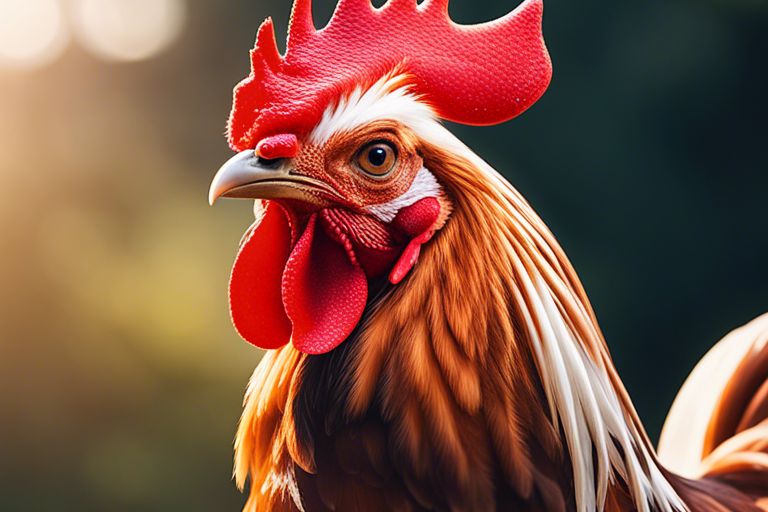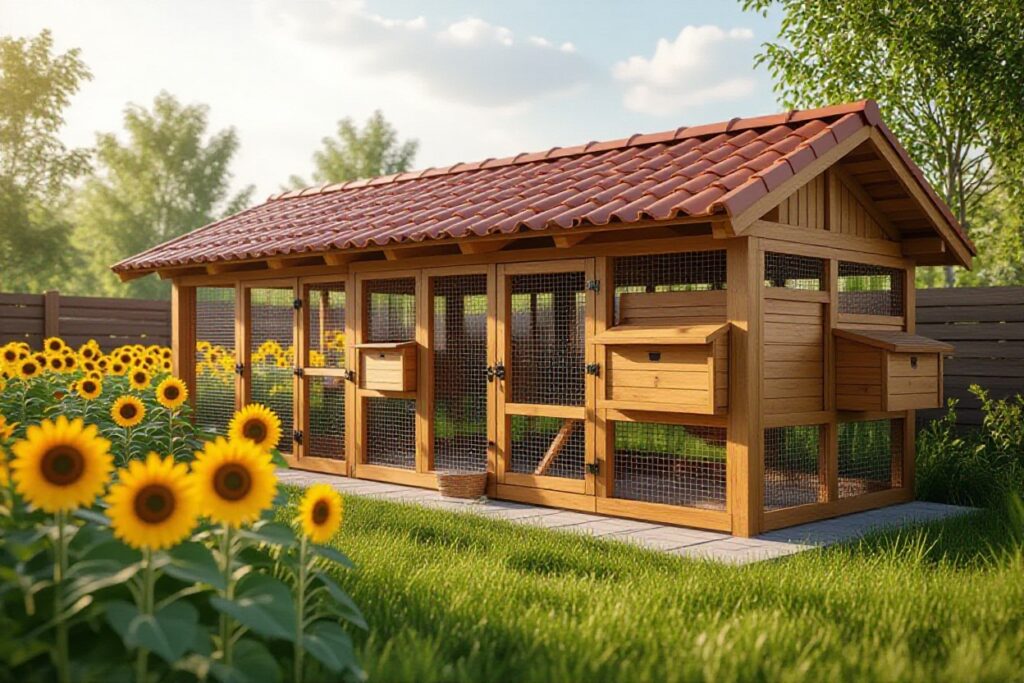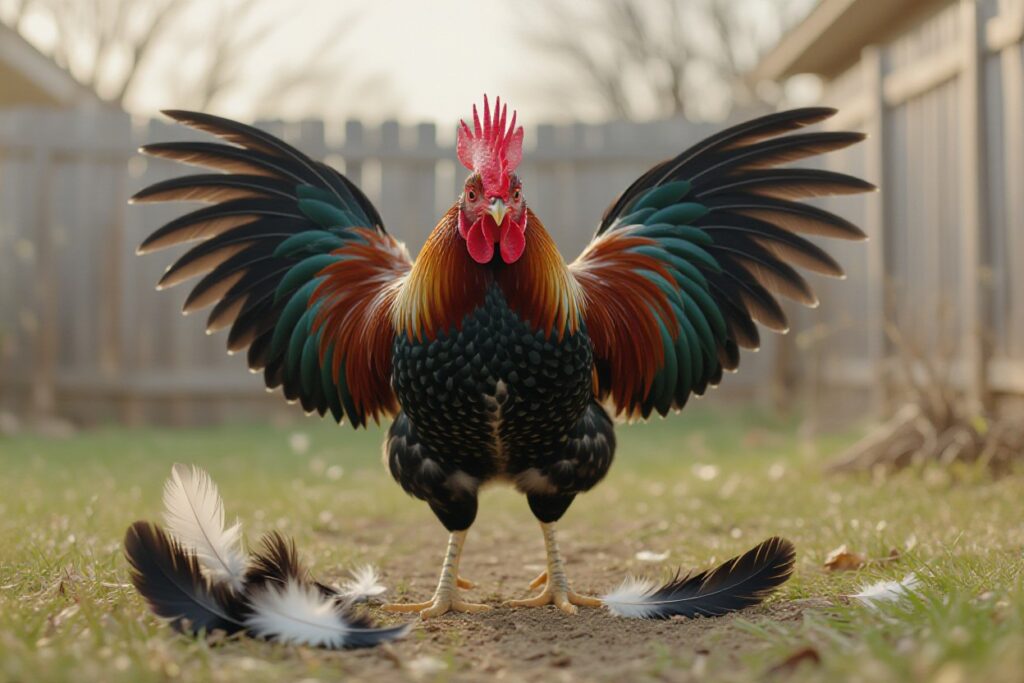The majestic rooster, often seen as the symbol of the farm, communicates with its own unique body language. Understanding what your rooster is saying can provide valuable insights into its mood, intentions, and interactions with other chickens in the flock. Just like any animal, roosters have their own way of expressing themselves through subtle gestures, vocalizations, and behaviors that can be deciphered with a keen eye and a bit of knowledge. By decoding rooster body language, you can better care for, communicate with, and appreciate these fascinating birds in your backyard or farm setting.

Understanding Rooster Postures
Aggressive Displays
For roosters, aggressive displays are common when they feel threatened or want to assert dominance. These displays can include puffing up their chest, raising their hackles, and making themselves appear larger by flapping their wings. They may also make direct eye contact and emit low growls or loud crowing sounds to intimidate perceived threats.
Submissive Behaviors
To decipher submissive behaviors in a rooster, look for signs such as lowering of the head, crouching down with feathers flattened, and avoiding direct eye contact. Submissive roosters may also make clucking or cooing sounds as a way to communicate their peaceful intentions to the dominant bird.
One important thing to note is that submissive behaviors in roosters are not a sign of weakness, but rather a way to maintain peace within the flock hierarchy. By displaying submissive behaviors, roosters can avoid unnecessary conflict and maintain a harmonious environment within the flock.
With a keen eye for observing rooster postures and behaviors, you can gain valuable insights into the dynamics of your flock and ensure a peaceful and balanced coexistence among your feathered friends.
Vocal Communications
Common Rooster Calls
While roosters may not speak our language, they have their own way of communicating through a series of vocalizations. An understanding of these calls can provide insight into your rooster’s mood and intentions.
Interpreting Vocal Signals
An imperative aspect of deciphering your rooster’s intentions is through his vocal signals. Roosters have various calls for different situations, such as crowing at sunrise to establish territory or warning calls to alert the flock of potential danger. By paying attention to the pitch, volume, and frequency of these calls, you can better understand what your rooster is trying to communicate.
Interpreting a rooster’s vocal signals can help you anticipate his actions and respond accordingly. Whether he’s calling for attention, expressing dominance, or alerting to a threat, being attuned to his vocalizations can deepen your bond and ensure a harmonious relationship with your flock.

Rooster Interaction with Hens
Courtship Behavior
On occasion, roosters will engage in courtship behavior towards hens. This can include low, rhythmic clucking, dancing movements, and even offering food to the hen. These behaviors are a way for the rooster to impress the hen and establish a bond with her.
Pecking Order Maintenance
Order in the chicken coop is necessary, and roosters play a crucial role in maintaining the pecking order. They do this by asserting dominance over other birds through pecking, chasing, and vocalizing. This behavior helps establish a hierarchy within the flock, reducing aggression and ensuring order within the group.
To maintain peace within the flock, roosters use body language, such as erecting their neck feathers and standing tall, to intimidate lower-ranking birds. They may also use subtle cues like pecking at the ground or moving in a deliberate manner to assert their dominance. By establishing and maintaining the pecking order, roosters help create a harmonious environment for themselves and the hens.
Body Language During Feeding and Foraging
Signs of Contentment
Contentment in roosters during feeding and foraging is indicated by a relaxed stance, gentle pecking at the ground, and a soft clucking sound. They may also exhibit a slight wagging of the tail feathers as they search for food. These behaviors show that your rooster is comfortable and enjoying the process of feeding.
Distress Signals
On the other hand, distress signals during feeding and foraging can include raised feathers on the neck, a tense posture, and rapid pecking movements. If your rooster is displaying these signs, it could indicate that he is feeling threatened or anxious in his environment.
It is important to observe your rooster’s body language during feeding and foraging to understand his feelings and ensure his well-being. By paying attention to these cues, you can better respond to his needs and create a harmonious environment for your flock.

Interpreting Rooster Interactions with Humans
Friendly Approaches
With roosters, a friendly approach is typically signaled by calm body language, such as relaxed or gently fluffed feathers, a soft clucking sound, and a lowered stance. They may also approach you with a gentle peck or nuzzle, showing curiosity and a willingness to interact. When a rooster approaches you in this manner, it’s a sign of trust and friendliness.
Warning Signs
Any sudden puffing up of feathers, aggressive pecking or charging, raised hackles, or loud, persistent crowing can be warning signs of an imminent attack. If a rooster exhibits these behaviors, it’s best to proceed with caution and give the rooster some space to calm down before attempting any interaction.
Understanding rooster body language is crucial for every chicken keeper, especially when it comes to deciphering warning signs that a rooster may be feeling threatened or territorial. Being able to recognize these signals can help prevent potential conflicts and ensure a harmonious relationship between roosters and humans.
Conclusion
To wrap up, understanding your rooster’s body language is crucial for maintaining a harmonious relationship with your flock. By decoding their signals, such as wing flapping, vocalizations, and posture, you can better anticipate their needs and address any potential issues before they escalate. Paying attention to these cues will not only help you communicate effectively with your rooster but also ensure a happy and healthy environment for your chickens. So, next time you observe your rooster, remember that their body language is their way of speaking to you – be sure to listen and respond accordingly.
FAQ
Q: What are common rooster body language signals to look out for?
A: Some common rooster body language signals include erect posture with raised neck feathers, chest puffed out, wing dragging, and making a “tidbit” sound to attract hens.
Q: How can I tell if my rooster is feeling aggressive?
A: Aggressive roosters may exhibit behaviors such as flogging (attacking with spurs), charging at you with neck extended and hackles raised, and making loud, repetitive crowing noises.
Q: What does it mean when a rooster is pacing back and forth?
A: Pacing back and forth can be a sign of restlessness or agitation in a rooster. It may indicate that the rooster is on high alert or feeling threatened.
Q: Why do roosters sometimes flap their wings and crow loudly?
A: Flapping wings and loud crowing can be a display of dominance or a territorial warning from a rooster. It is their way of asserting their presence and defending their territory.
Q: How can I respond to my rooster’s body language to establish dominance?
A: To establish dominance with your rooster, maintain a confident posture, make eye contact, and use a firm tone of voice. Avoid turning your back or showing fear, as this can be interpreted as submission.
Q: What should I do if my rooster shows signs of aggression towards me or other animals?
A: If your rooster displays aggression, it is important to assert your dominance without resorting to physical punishment. Use consistent training techniques, such as time-outs or redirection, to correct the behavior.
Q: Can roosters’ body language change depending on their mood or surroundings?
A: Yes, roosters’ body language can vary based on their mood, environment, and social dynamics within the flock. It is important to observe your rooster regularly to understand his unique cues and behaviors.











